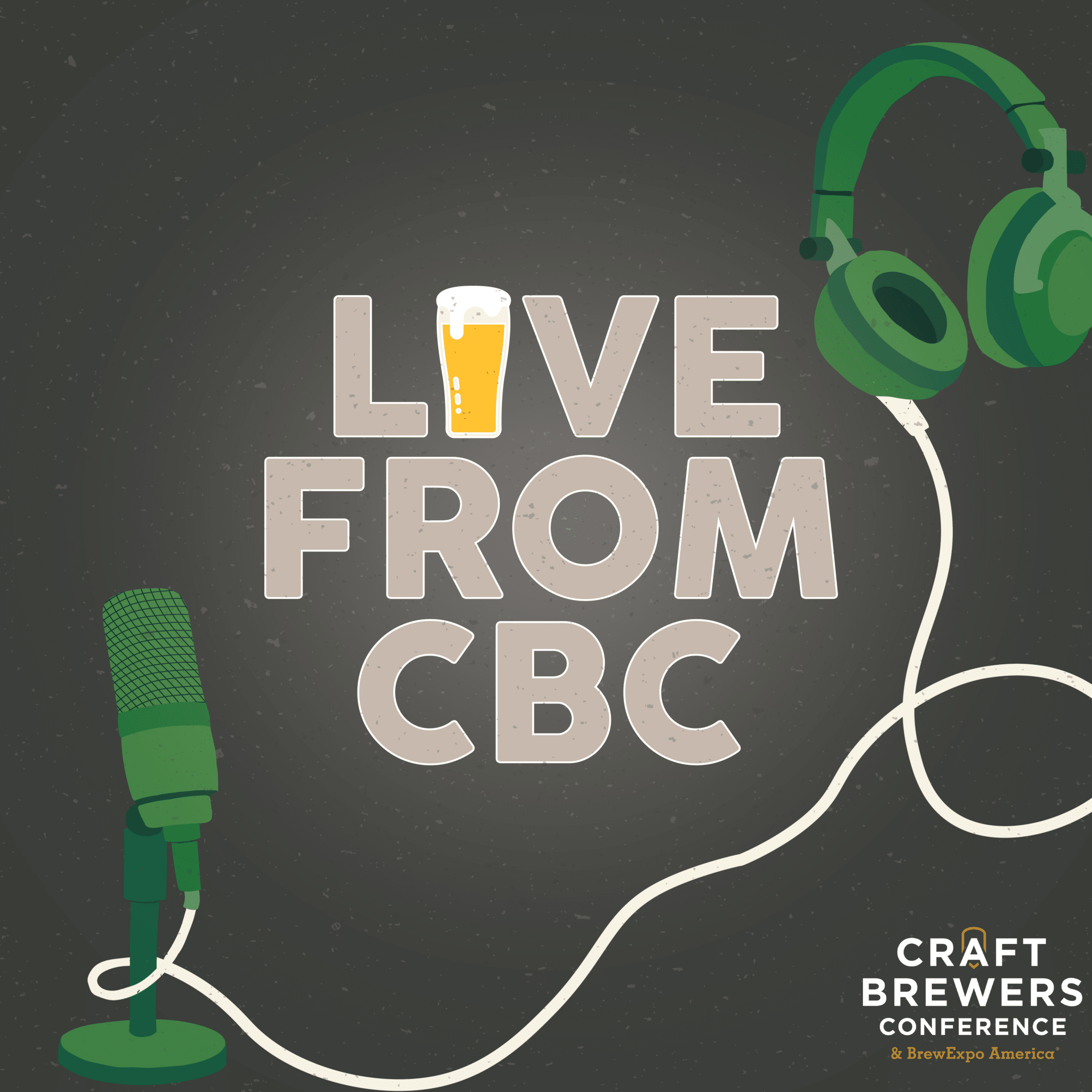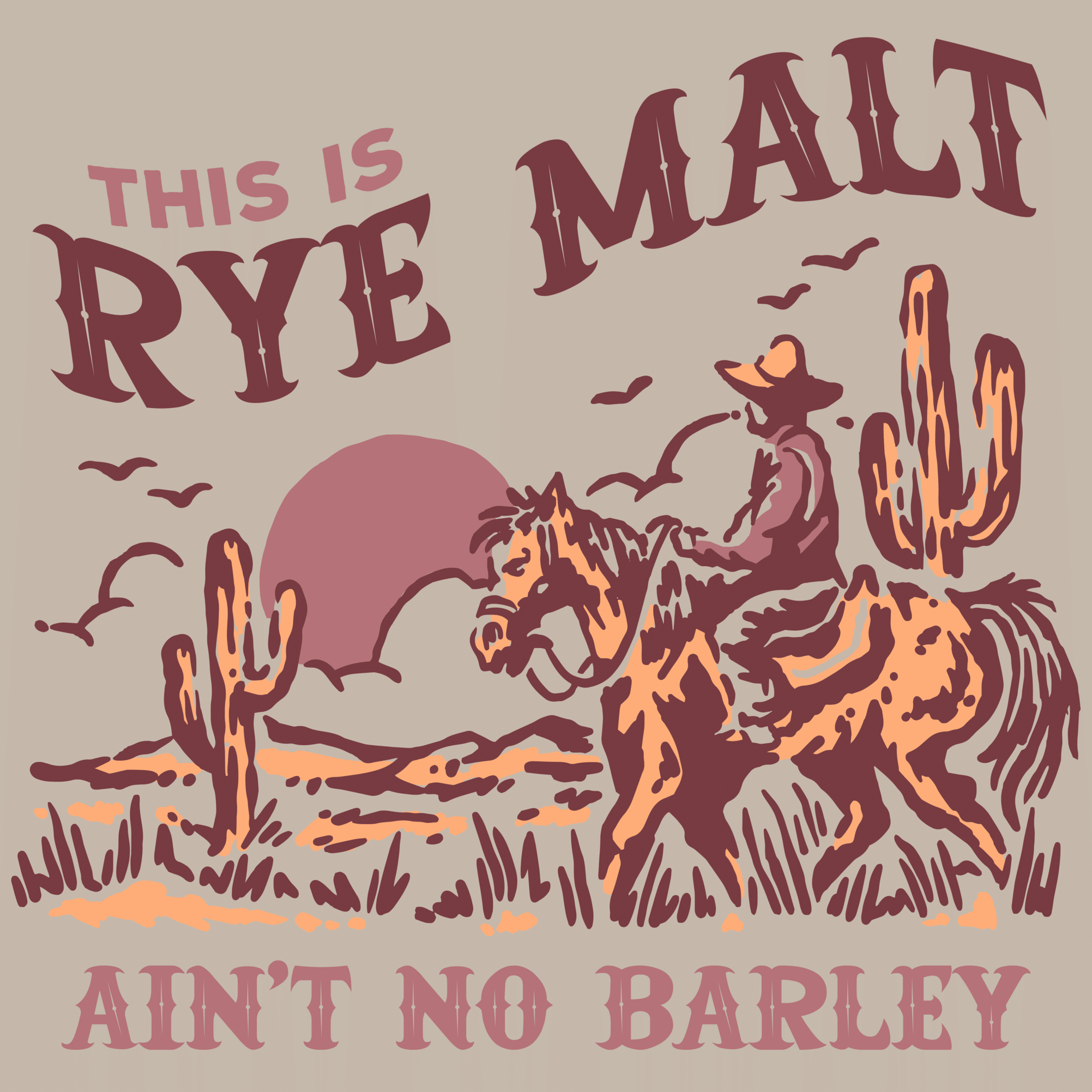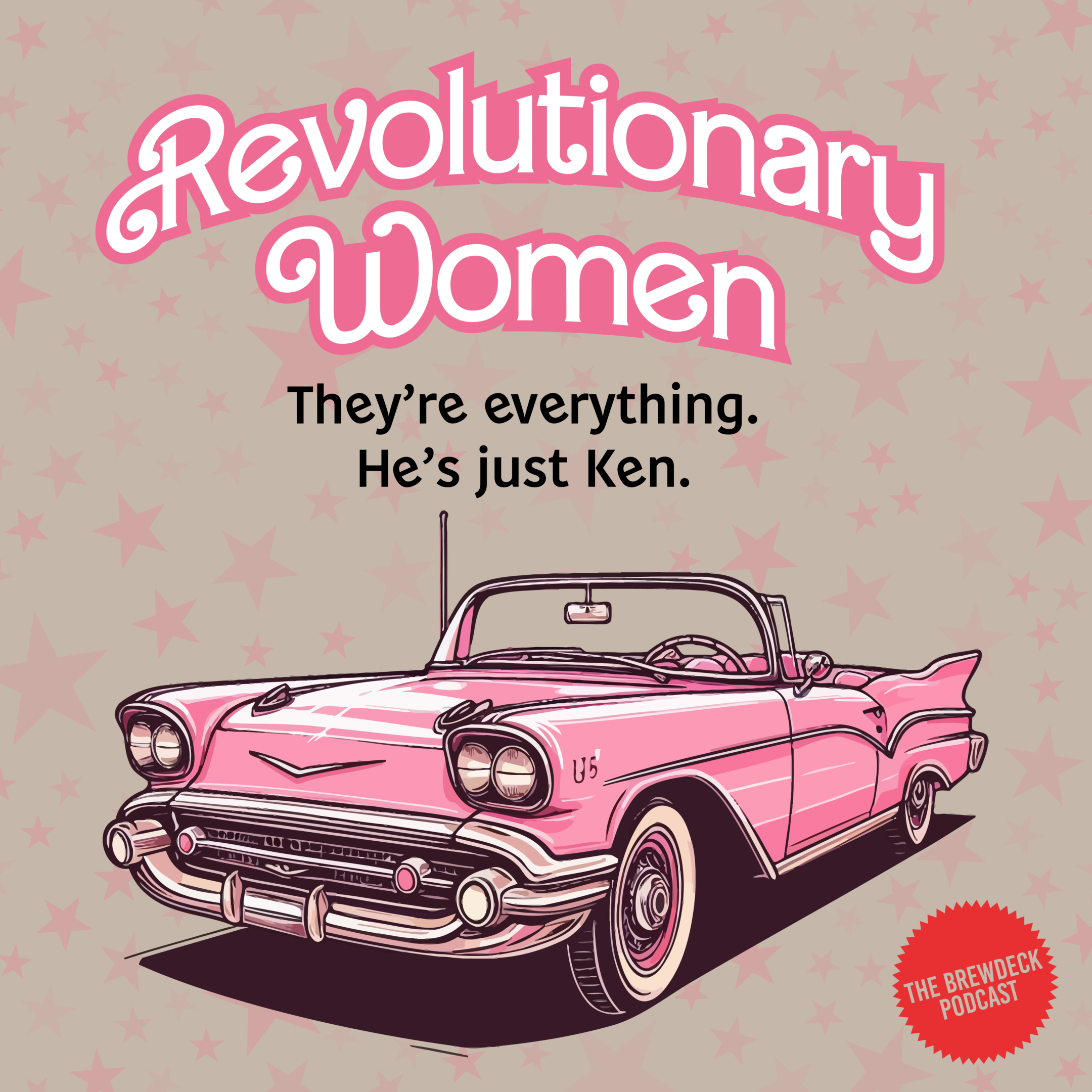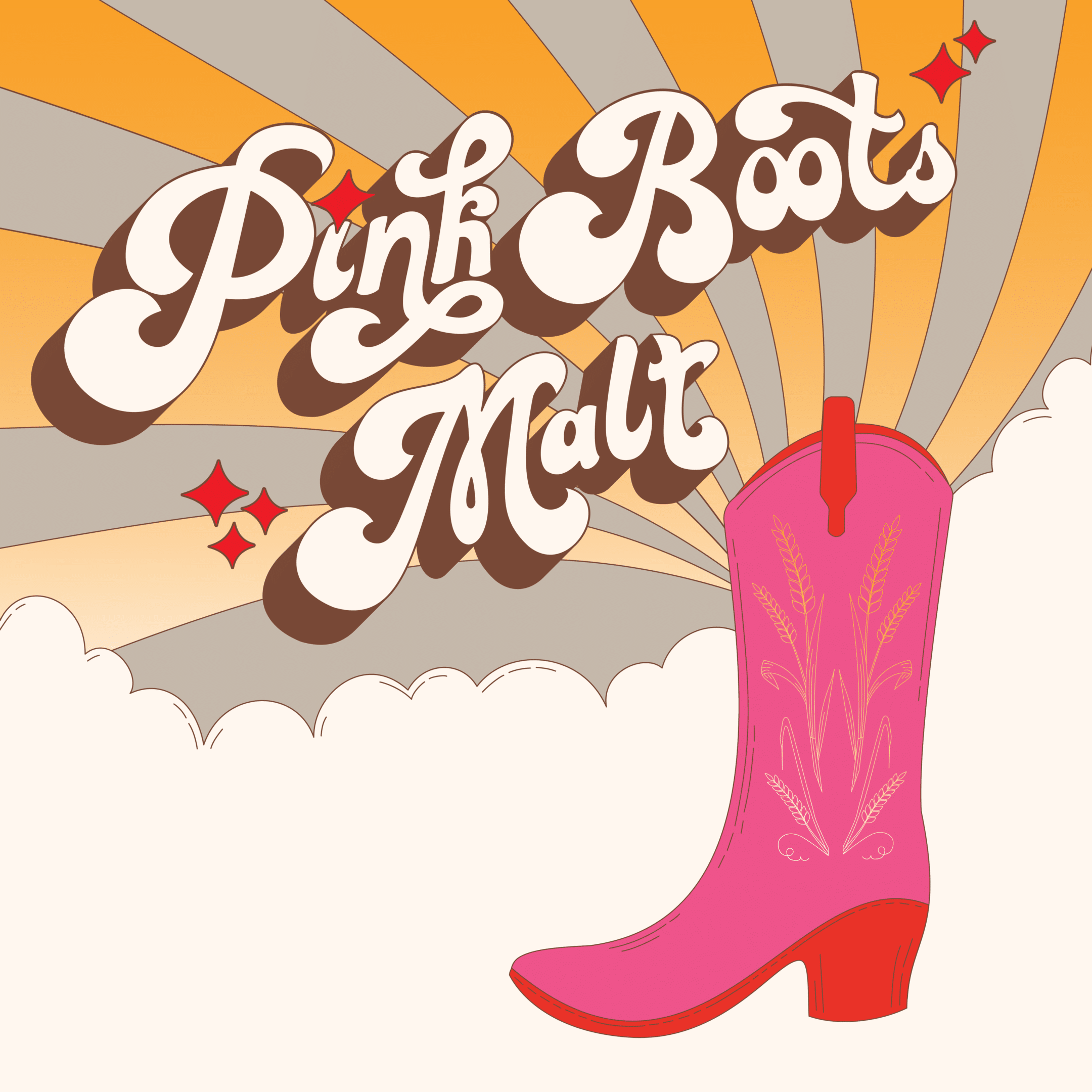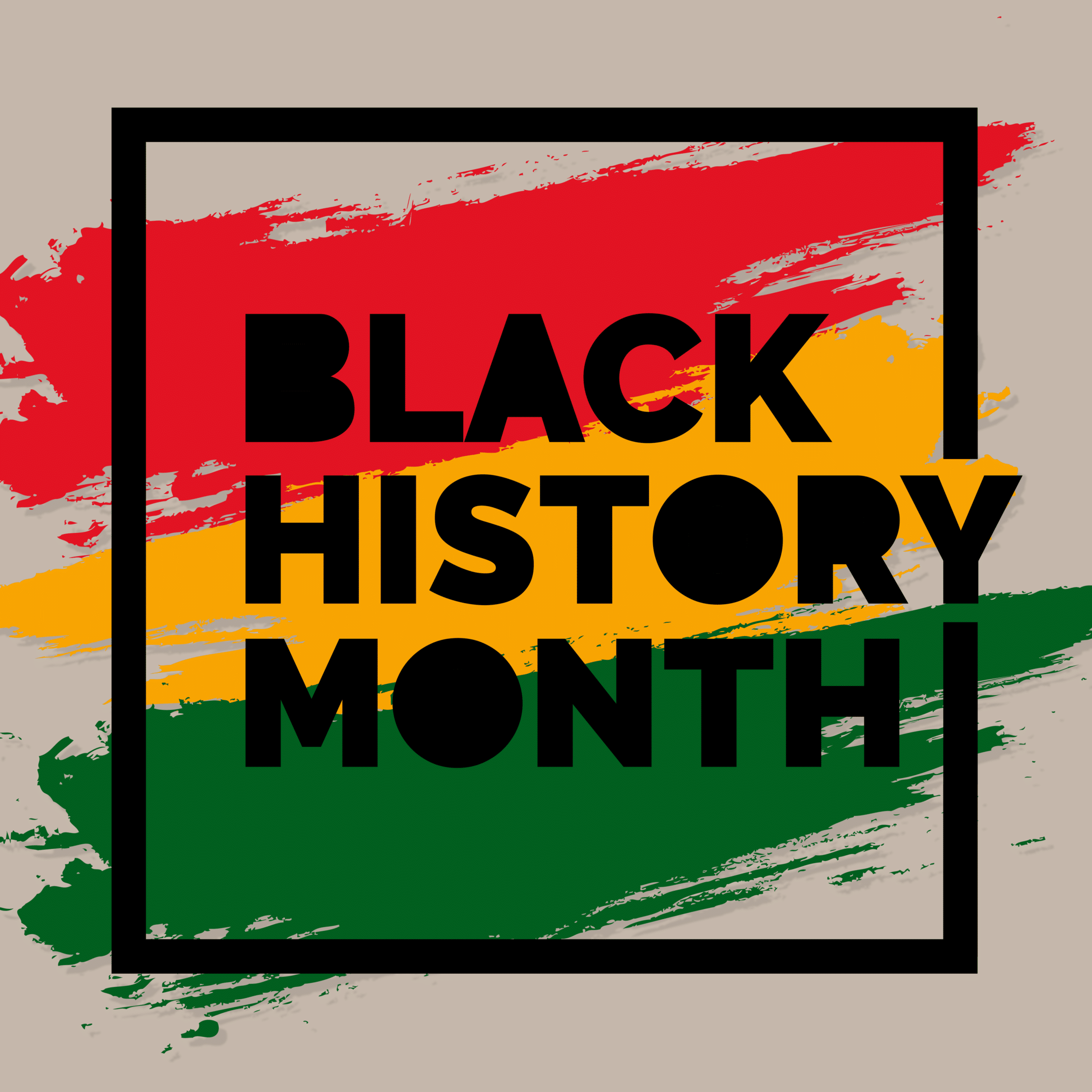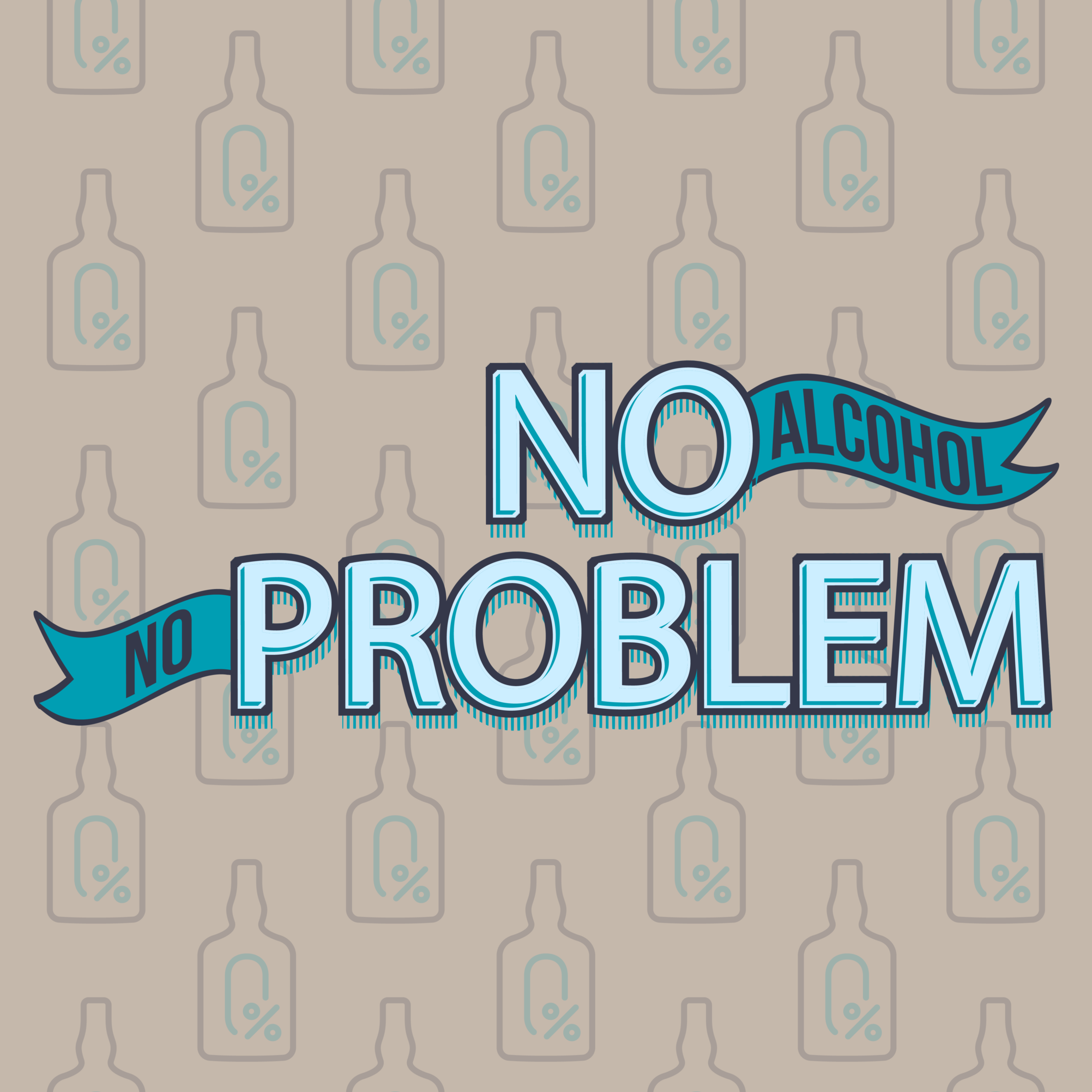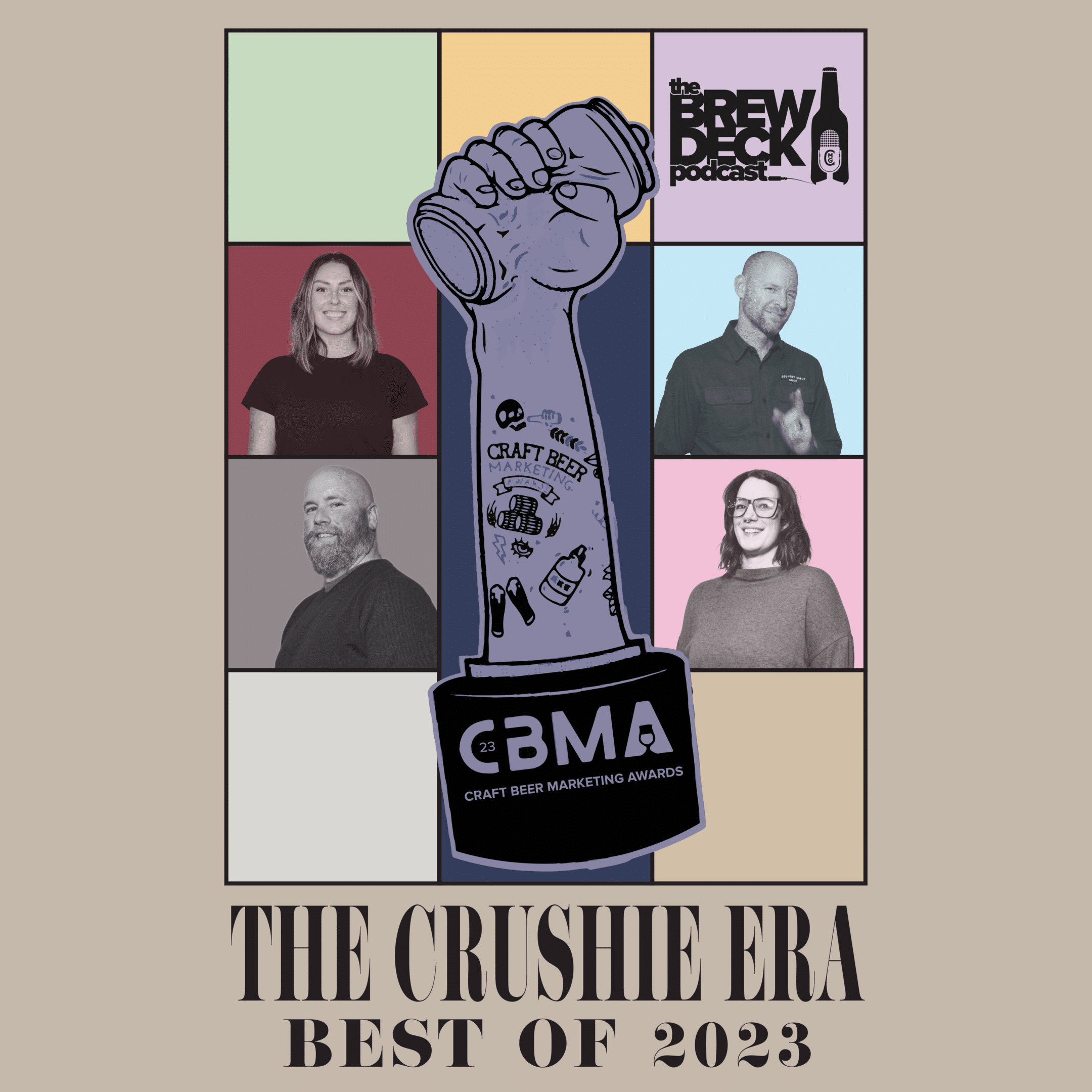
PODCAST GUEST
Kalev Nisbet

MORE EPISODES
SEASON 4, EPISODE 18: THE BREWERY EXPANSION PACK
PODCAST HOSTS:
ADAM WILSON – TERRITORY MANAGER, COUNTRY MALT GROUP
HEATHER JERRED – TERRITORY MANAGER, COUNTRY MALT GROUP
GUESTS:
KALEV NISBET – BREWMASTER, SHACKLANDS BREWING CO.
Key Points From This Episode:
- At what point do conversations begin about expanding?
- What milestones indicate you’re ready or in need of an expansion?
- How do decide how big you want to expand?
- What were the first steps in expanding?
- Considerations for expanding to a new location or expanding in your current location
- Some of the challenges and lessons learned during the expansion
- How to learn from other breweries’ expansions?
- What’s the most exciting part of expanding
Transcript - The Brewery Expansion Pack
EPISODE S.4, E.18
[THE BREWERY EXPANSION PACK]
Adam (00:09):
Hi, and welcome to another episode of the BrewDeck podcast. I am your host, Adam Wilson, and I’m here with my co-host Heather Jarret, on this special all Canadian episode.
Heather (00:20):
All Canadians.
Adam (00:22):
All Canadians. All Canadians, all the time. We’re going to say so a whole bunch and that’s where we’re going to go from there.
Heather (00:26):
And we actually talk a lot about Maple, so …
Adam (00:30):
Which is weird.
Heather (00:30):
… Sorry.
Adam (00:31):
It’s so good. August is a special month for us because we started the BrewDeck podcast back in August of 2020.
Heather (00:41):
I can see us lost in the memory. Now we are here. We have 80 episodes, three years in and one craft beer marketing award. We got a Crushie this year. Best Beer podcast.
Adam (00:51):
So good.
Heather (00:54):
It’s so good.
Adam (00:55):
I’m so excited about that.
Heather (00:56):
Yeah, so whether you’ve actually listened to us since the very beginning in season one, are just tuning in for the first time. Thank you to everyone for being here with us. And in honor of our anniversary. We’re really excited to do this episode. We’ve been wanting to do it for a couple of years now, kind of ever since we did one of our most played episodes, which was, “Dude, let’s start a brewery” back in season two before Adam and I even came on board. So today we’re going big or going home to explore the other side of starting a brewery, which is expanding a brewery.
Adam (01:29):
Yeah, we’re doing it with special guest today, Kalev Nisbett, who is the head brewer at Shacklands Brewing in Toronto, and he is just a wealth of information and pretty excited for this one.
Heather (01:43):
All right, before we jump into our interview, I just want to do a final reminder to everybody that we are in the last couple of weeks to pre-order this sixth annual Veterans Hot blend, which is Citra HBC638, Talus and Sabro.
(01:58)
It’s a really great combo and it’s expected to offer some bright citrus notes, including lime and grapefruit with subtle herbal notes and some pine. So make sure to contact your CMG sales rep to pre-order before August 28. So let’s jump in.
Adam (02:14):
And we’re speaking today with Kalev Nisbett from Shacklands Brewing in beautiful Toronto, Ontario, Canada. Why is it that we always have to throw Canada in when we’re talking about any place here. They don’t do that in the States. So anyway, that’s me, me just going off on a side tangent here, it’s Heather, myself and Kalev today, so it’s the all Canada connection here. So hope our American listeners have their calculators ready to do some conversions today. So as we talk in hectoliters. So Kalev, can you start us off, just tell us a little bit about yourself, how you got into the brewing industry and a little bit about Shacklands.
Kalev (02:59):
Hi. So I am currently the brewer, head brewer, brewmaster, whatever you really want to call it, at Shacklands Brewery. We are currently a three person operation, operating out of 100 Symes in Toronto. We’re up in the Toronto Stockyards. I’ve been at Shackland’s since 2018, which overlapped, I actually went to the Brewmaster and Brewing operations management program at Niagara College before that, worked [inaudible 00:03:34] the school, the Lab and Shacklands all at the same time while going to school.
(03:37)
That was fun while we were also planning our wedding, which was in the fall of 2018. Yeah, it’s been just a whirlwind ever since things started here. Shacklands is, by our own definition, kind of a belgo-centric brewery. Everything we do is either kind of pure Belgian styles from Abbey to farmhouse or kind of hybrids of … it’s like some Belgian styles meet other styles of beer, mostly kind of North American Belgian hybrids because all the yeast we use is Belgian.
(04:15)
So one thing leads to another and everything has a bit of a Belgian kick to it, whether we like it or not, just what we do.
Heather (04:24):
There’s nothing wrong with that.
Kalev (04:27):
No, and you know what? Honestly nobody else in … tons of breweries will make the odd Belgian beer here in there, but we’re the only one in Toronto that’s doing it consistently and one of the only few in Ontario that are. So we love these beers. We’ll keep preaching and hoping that more and more people fall in love with them too, and that is generally what’s been happening, which is I think why we’re having this conversation right now. So yeah, we’ve been here since I think the beginning of 2018, I kind of came on that fall. We’ve been kind of gradually growing. We obviously don’t have a huge marketing budget, but we have been organically growing our consumer base, people that aren’t kind of familiar with our beers and just generally some Belgian styles that they might not have been aware of before. We have one brand in the LCBO and yeah, it’s kind of what we do.
Adam (05:28):
Very cool. So most of the stuff that you are brewing it’s really being sold either in-house or through licensees?
Kalev (05:40):
Yeah, yeah, that’s fair to say.
Adam (05:44):
Cool. Now you were saying before we started recording that your background, you were in architecture before. How and why did you make the switch from that over to brewing?
Kalev (06:00):
So I guess fundamentally I found out of high school that the things that I enjoyed were some combination of pure science and creativity. So obviously architecture is more physics and geometry and sitting at a desk, whereas brewing is all chemistry and biology and not sitting at a desk. But still, I just really love meshing just science and the ability to create together.
(06:38)
I enjoyed architecture but kind of fell out of love with it practicing for a few years, and started at the same time kind of falling in love with not just craft beer, but just beer in general. I actually wrote a dissertation on the history of a bunch of historical beer styles, and a breakdown of how each of them developed in the parts of the world that they’re endemic to, and just doing the research for that really opened my eyes to, there’s a lot more to beer than what I realized at a time. And that kind of realization has just continued for the past almost decade now. Still keep on being kind of amazed by the thing that we spend our days making and consuming.
Heather (07:26):
So the brewery opened in 2018. You were not involved in the initial planning of Shacklands Brewing?
Kalev (07:33):
No, no. So the brewery was started by, it was a partnership between our current owner, Dave Watts, along with Jason Trombley and they together, Jason was the brewer at the time and kind of founded Shacklands … he’d also been doing a bit of contract brewing at a few other places beforehand, but the beginning of 2018 and leading up to that, the things really started with our own bricks and mortar here.
Heather (08:02):
The topic of this episode is brewery expansion. So obviously you’re going through an expansion. Can you tell us how big you were at opening and where we’re going to see you when this expansion is complete? [inaudible 00:08:18] hectoliters.
Kalev (08:20):
So we were dealing with mostly, we had a system that I think it was literally bought off of [inaudible 00:08:28] from a little lager brewery kind of north of Toronto and it’s old Chinese stainless, but it was well made recent, reasonably good quality stuff. And we had a seller, pretty much five hectoliter conicals with a really weird little brew house. It was pretty cobbled together.
(09:00)
We ended up over time kind of upgrading the brew house, but things have always been a little kind of MacGyver not really done together in a logical way, just in a way that they kind of needed to be at the time. But we [inaudible 00:09:15] a lot of the conveniences to come with more proper professional brewing equipment. We didn’t have a mash ton with a powered like rake plow. We didn’t have a pump driven whirlpool, nothing had hard piping connecting it together.
(09:33)
Our HLT was maybe 20% the size it needed to be. It turned brew days into a lot more work than they had any right to be. And not to say that every brew day is never work, but it was not reasonable. And over the years we have been organically again, growing a much stronger presence, and having more and more trouble keeping up, which has led to, in the last year we actually purchased a full suite of new fermentors. So we replaced four of our kind of five hectoliter fermentors with more 12, 12 and a half hectoliter fermentors.
(10:18)
And I have started basically double brewing into them and because it’s just me back here, and I can’t afford to spread those brew days between two days, just because there are enough deficiencies by overlapping them, those turn into 17 hour brew days, with lots of manual nonsense and that was not sustainable. The plan has always been to go through this, we had opened up a line of finance with a company called Fair Finance, they deal specifically with companies that are focused on community engagements and giving back to the community, which is something that we’ve always done here. So they were a pretty logical partnership with that and they helped facilitate this on the capital side of things.
Speaker 4 (11:17):
Sorry, what was the name of that organization?
Kalev (11:19):
They’re called Fair Finance.
Speaker 4 (11:20):
Fair Finance.
Kalev (11:22):
Yeah. So we started last year going around, starting with the actual work of figuring out how we were going to do this and obviously planning takes a long time. I tried my absolute best to do our due diligence to try and put things together in a way that we could source things from a Canadian or at least North American manufacturer. But unfortunately just with the way things have been going through the pandemic, with the costs going up and up and up, what was at one point kind of like loosely achievable became not achievable as much as I tried, there’s just no way forward that we’d be able to afford system made here. So we ended up having to go with a Chinese manufacturer. So that of course added a bit of complexity with the design and the actual transport related with that.
(12:25)
But yeah, we are literally kind of halfway through the process of actually setting things up here. Getting things into the building was interesting. We don’t have a good large garage door. We do have some double doors and a back hallway that leads to a loading dock, but there was no easy way of even just opening up walls to make a bigger [inaudible 00:12:50]. And we had to manufacture the system in a way that it could be broken down, the legs could be bolted off and on. We had to remove windows and kind of get it in through there, which was a logistical nightmare. But that hurdle’s over at least.
Adam (13:11):
So when you look at an expansion like this, and obviously with a space confinement, planning the steps for an expansion is obviously ridiculously important at that stage. So what were the first few steps to get you to get the point where you were able to physically start bringing stuff in? How did you plan out what you wanted to expand, what size you wanted to expand to, all that kind of stuff?
Kalev (13:44):
Well, I mean the logical thing to do was, we had a setup that was not working for us, and obviously the best thing we could do is if we’re bringing this stuff in. We did spend some time kind of scouring the used market, but at the time we were looking, and we spent a fair bit of time looking around. Nothing really panned out to be exactly what it was that we needed. We didn’t really want to go through the whole … before we were a fully electric brewery, electric HLT, electric pedal, like single infusion mesh. And honestly, that had been working well for us at that scale, but we wanted to avoid also having had the complexities of installing a boiler, installing steam lines, doing all of that. So we did go with a direct wire kettle and an electric HLT, which was the most logical, given the resources we have here available to us.
(14:48)
And we basically took a look at what size we would need to be able to just do single brews to fill our new 12 and a half hectoliter fermentors. And that was the starting point. Obviously things as it is, it is not as simple as that. There are tons and tons and tons of little like this and that you have to choose how you’re going to do, but fundamentally, we were looking at just having a brew house that makes sense for us, that has some automation, some hard piping, which is not where we were coming from. Pump driven whirlpool that has powered rake and plow, which will make my life a lot easier and honestly will probably somewhere between two and a half to three times increase the total capacity that we can be putting out, which is attractive because we keep running out of things and I can only work so hard.
Adam (16:07):
Yeah, fair enough. I guess the part of the next thing is how often are you able to … do you have licensees that you aren’t able to get stuff to just because you’re running out of stuff? How has the original layout affected what it is you are actually truly trying to do over there?
Kalev (16:32):
Yeah, well this is something that we’ve always been grappling with, at least in some way. We have started trying to focus on a few of our higher volume brands and obviously what we’re doing a little bit less kind of variety as compared to how things used to be here. Just trying to at least be able to put out enough beer to at least keep a number of licensees happy. We have always held ourselves back somewhat with outside sales like that just because we obviously don’t want to put ourselves in a position where we have overextended ourselves and aren’t able to see commitments through, which would do far more harm than good.
(17:18)
So the reality has been that we have just been actively holding back on sales, just trying to at least make sure that we are keeping our own tasting room and [inaudible 00:17:31] for the higher margin sales.
(17:37)
But yeah, we are trying to usher in a new era where we are able to see more of our beer around the city. There are places that have shown interest, but we haven’t really been able to start a relationship with, just because it’s not going to do anybody any favors if we start running out beer and we can’t keep up with any kind of commitments we’ve made to them. So that’s been a challenge in and of itself.
Heather (18:08):
Yeah, I can imagine. Can I take this all the way back to 2018, when you came into the brewery? Were conversations around possibly needing to expand happening at that time? Or when did you hit some specific maybe milestones where you were like, we really need to seriously talk about expanding the brewery to keep up with these sort of demands?
Kalev (18:33):
Yeah, so it’s something that we had always been talking about, and it is something that has gradually been happening again with the increased [inaudible 00:18:45] brewhouse that would’ve been, I think in 2019. We got some [inaudible 00:18:50] for that and we have just been gradually seeing organic sales increasing.
(18:57)
We didn’t want to take it the other way and be like, all right, well let’s make lots of beer and if we make it, they’ll buy it. We have been spending some time developing our brand and our consumer base to the point that we’ve seen that we are in a place where we just cannot make enough beer with the equipment that we have. And that from my point of view anyways, is the best way to grow or you’re growing into a demand that already exists. We are just coming out of a pandemic as well. Things have been all over the place and really difficult to really track even though there are seasonal ups and downs, it has been a little bit more erratic than it had been before. But nonetheless, as things kind of start to open up again, we are seeing a pretty substantial increase in demand [inaudible 00:19:54] is getting us around the city a little bit more and we have been winning a few awards, which I don’t think have been hurting.
Heather (20:03):
Yeah, we’re definite y going to come back to that list of awards once we get through this expansion stuff. I definitely want to talk about that. You do have an extensive amount of awards that you’ve gotten over the past few years, which is just fantastic. So the conversation starts, you decide you’re going to do this. What was your very first step? Was it going to the finance company? Was it bringing on a consultant maybe?
Kalev (20:34):
So we’ve always, again, given that our pockets are not deep, we don’t have a list of financiers, so we have been trying to do things on a more of an ad hoc basis. We did again, start looking to see if there was anything kind of hovering around the used market that would make sense for us, which would’ve obviously been ideal things that kind of worked out in a nice way to get some nice equipment in that fit the bill and the budget. But as time went on, it just became clear that wasn’t really happening. So we started getting well just speaking to a bunch of manufacturers, seeing what it would look like to get a system from them, which is when things started getting pretty real, because we had started talking to some of them years ago even. But there were some complications from when ownership changed around a little bit, [inaudible 00:21:43] Dave kind of took over the company from his previous partner and just one complication led to another and our timeline got extended, on top of the fact that Covid got in the way just a little bit.
(22:01)
So at the end of the day we started looking kind of earlier last year at what these supposed to look like and how prices had just jumped and were continuing to rise. So we really wanted to try and get something figured out and get it on paper. And that turned into going through a company called [inaudible 00:22:26] they have a guy named Charlie who’s based out of Toronto here, who is kind of representative for them who’s been working with us trying to get this all together, and lots of back and forth with drawings after that, which I-
Heather (22:44):
Is he a brewery consultant? Is he …
Kalev (22:47):
So he works through [inaudible 00:22:51], I don’t think he’s an agent of them specifically, but does work with them and purchases his things through them and has a relationship with them. He does kind of resell their equipments as well, and helped us go through the design phase of a system that would fit in here and work in here.
Heather (23:17):
Again, designing equipment that would fit in there. Was there ever any conversation about possibly moving, getting a new location?
Kalev (23:24):
There’s always talking about that. Our location? Well, what is well suited for a brewery is not, we don’t have amazing foot traffic here, as I’m sure Adam knows has been around the very few times. We are in a semi-industrial area north of what is a constantly growing kind of residential area. There is a lot of development happening around us right now.
(23:52)
The reality was even if that did work with even the equipment that we have with the setup we have, our fridges are … just moving a breweries obviously a pretty large undertaking, the capital and costs involved in moving to another location on top of also upgrading our equipment was just not something that was doable unfortunately.
(24:19)
So yeah, the reality was just trying to maximize things. We do have at least enough space here to fit some stuff that does fit the bill better for how we want them to be in the coming years, as far as outlook goes. And we do find ourselves here. We have a pretty good community around us of just people that live in the area. We’re next door to a couple other breweries. We’re in the same building as Rain Hard Brewery next door to Junction. We’ve got a great relationship with those guys too. They’ve been pretty great. We try and support each other where we can, so it would’ve been kind of a shame to leave this little neighborhood as well.
Heather (25:00):
That’s great that you were able to make it work.
Adam (25:04):
I was just going to say in terms of nothing ever goes according to plan in life, what challenges have you guys had to face and overcome while you’ve been taking part in all this over the last six months or so?
Kalev (25:24):
A big challenge is obviously planning for what is going to be a period of a pause in manufacturing, that is inevitably always going to be a bit longer than you would hope it would be. So leading up to this, we did even further dial back the diversity of our brands, and I just spent some time just brewing like an absolute mad man, trying to build up at least a good inventory of some of our core brands just to make sure that we had some stuff to see us through, what was going to be a little bit of a drought in manufacturing. On top of just filling up the cellar as much as physically possible so that we are able to do a little bit of packaging while this goes on as we need it, which so far has been working out okay. Everybody always just tells you things can be more complicated than you thought it was, and somehow you’re always surprised when you know, see that they were obviously absolutely right.
(26:25)
This has been difficult. Even just, again, getting everything into the building, finding people to come and in a short period of time, try and take out our old huge windows and then come and put them back in, is the kind of job that it’s a small job, an awkward one, and really difficult to find somebody to do. We have lucked out that we found a lot of people through friends of friends who have thankfully been the right people for the right jobs, but it’s taken some time to put everything together. Honestly, having a project manager or something like this around would not be the worst thing. Start making some Gantt charts and see how this all works out because it is logistically difficult. There are always orders of operations for how things need to go, and I’ve just been doing my best to try and … a lot of planning has gone into this and at least we went into this knowing it was going to be difficult.
(27:27)
So we have tried to set ourselves up as well as we could for what is obviously going to be a bit of a process, getting this hooked up. We have to get … we’re dealing with natural gas now where we weren’t before, so we have some runs to do, ventilation. We want to do everything properly and safely and these things all take time and money.
(27:52)
And honestly, we even had some kind of contractors come in that we had lined up that ended up things just hadn’t panned out when we kind of wished that we had some backups set up, which we didn’t really. So we’ve been scrambling to find people to come in at the last minute to try and do things well for us, which has been extending our timeline even farther, because a lot of these things have to happen before other things can happen, and that really is what it all comes down to is that just trying to prioritize all these tasks and just make absolutely sure that everything is lined up to get it done as quickly and as properly as possible.
Heather (28:39):
So how long was your production been shut down?
Kalev (28:45):
So we’ve been shut down right now, it’s coming on a month. We’re really hoping in the next couple weeks to get things hooked up and finished up, we’re moving forward in pretty leaps and bonds now where we stagnated for a little bit just because of some of those complications. But yeah, it’s just one of those things also where every little thing just spawns a whole bunch of other little jobs you have to do. And it’s just, I’ve been in here kind of chipping away, just trying to keep progress going and not lose momentum, because we’re all tired and stressed right now, but there is an end in sight at least. And we’re all really excited at the prospect of having the system up and running because one of the biggest things that has been holding us back before now is really the physical limitations of me being a human being. I guess.
Heather (29:39):
What?
Kalev (29:42):
Keep up with things and stave off burnout, which have been a constant and it’s a constant to the point that I need to start looking out for my long-term wellbeing. I think self-care is one of those things that doesn’t really discussed enough in this industry, but it is really important, and working the way that I was doing it, I always knew it was not sustainable-
Heather (30:11):
Sustainable.
Kalev (30:11):
… But I had to keep on doing it for a much longer time than I had realized and started causing myself some real harm in doing it. So even more so now than before, this stuff really … it can’t come soon enough and I really am, I cannot tell you how excited I am at the prospect of getting the system online and running smoothly.
Adam (30:36):
I feel like interviewing you about an expansion during the middle of an expansion is taking off a bandaid really slowly for you. So we do apologize.
Kalev (30:46):
I know well enough we’ve gotten ourselves into what we have to do, so it doesn’t cause me any trauma talking about it at least.
Adam (30:55):
Okay, so you’re saying you’re excited. What is it about this, the new brew house, the new everything that excites you the most?
Kalev (31:04):
Really it is the idea of having things, just vessels that are appropriately sized with the conveniences come with this professional equipment that we didn’t have before. They take a lot of just the physical and mental strain away from a brew day, which making one batch on the system is obviously going to be cheaper than making one batch half the size on the previous system, which means that I will be able to be … whether or not we also are able to get somebody in here, our batch size and frequency are going to be going up because burnout is going to be less of an issue, which is excellent. Honestly, one of the main things that I’m excited about is an HLT that is not a bleckman tower, which we had before, which was not-
Heather (31:57):
Adam was telling me about this, this morning, we were talking about it. He was telling me about that.
Adam (32:03):
I love your HLT, I do. He must be so excited just to be walking away from that one.
Kalev (32:10):
Yeah, I’m debating whether we sell that or destroy it because I’m kind of [inaudible 00:32:16] but we’ll see. We’ll see.
Heather (32:17):
Can you take it out back and office space it?
Adam (32:19):
I was just-
Kalev (32:21):
Literally what I’m talking about, [inaudible 00:32:26] does have intrinsic value. Honestly, once we’re done with it, if is of use to anybody, I’d rather see it go.
Heather (32:34):
How big was it? What did it hold and what did it do for you? The fact that it didn’t hold a lot.
Kalev (32:41):
It held, I think a little over 300 liters.
Adam (32:48):
300 liters. And how big were you your brew days? I feel like the math doesn’t work out there,
Kalev (32:54):
Honestly, at a certain point I was maxing out our kettle to seven and a half hectoliters, so you’re looking at an HLT that is not large enough to mash in to sparge and it’s an electric kettle. So it was topping that thing up while just firing the elements as much as possible and trying to throttle things in a way that you’re keeping your temperatures right, and also keeping an eye on pH and situating on the fly while mashing and [inaudible 00:33:27] barging and doing other things. It was not fun.
Heather (33:35):
Not at all.
Kalev (33:35):
And adding additional mental strain to a process, which are already things you need to be keeping a close eye on if you want to be keeping your quality up, is not doing anybody any favors.
Adam (33:53):
What lessons would you say you’ve learned so far during this expansion?
Kalev (33:58):
Well, I am constantly reminded of planning is the most important part of this. So both quadruple measuring everything, double checking everything, getting to know the shop drawings like the back of your hand. And I spent quite a bit of time both on paper and mentally just going through brew days on the system as it was designed on paper. Just trying to see what makes sense, if anything needs to change to the point where, you know, you start dreaming about it and you might wake up in the morning and be like, oh, right, maybe that would make sense and start some modifications.
(34:47)
And I think obviously we haven’t set things up and test run it yet, but as things are coming together, it looks like I’m pretty happy with how things are looking. I think they’re going to make a lot of sense for what we do and how we like to do it here.
(35:07)
So yeah, plan, plan, plan, plan, plan until the cows come. And obviously I’m still probably going to be running into things where it’s like, oh, I really wish I hadn’t missed that. I’ve already seen a couple little things here and there, which you’ll be able to live with, but it’s just trying to prepare for every possible eventuality is, you can only do so much, but it’s pretty critical.
Heather (35:39):
Did you speak to any other breweries? You said you were really close to some of the other breweries in your area. Did you speak to any other breweries when you were going through this to lean on them?
Kalev (35:47):
I was pretty much [inaudible 00:35:48] every single person that I need, especially ones with a setup that is, even … every brewery is obviously wildly different, but there are some that have systems that are remotely similar to what we’re doing here. So yeah, no, I definitely have been bothering lots of people.
Heather (36:04):
Good. I think that’s just one of the great things about this industry too, is being able to lean on your friends in the industry for advice and for help with that. And thank you for coming on and giving your experience with it. It’s pretty important.
Kalev (36:24):
Honestly, it has kind of reminded me that this industry can be pretty great. There’s some lovely people who are just all too willing to lend a hand, give you advice, take time out of their day, which is pretty lovely.
Heather (36:39):
It’s pretty lovely. Shout out to the good people.
Kalev (36:45):
Yeah, right.
Heather (36:45):
All right, let’s stop talking about super stressful stuff, and talk about some of the fun stuff. Let’s go back and talk about your awards because needless to say, you’ve been kicking in the awards sphere, both the Canadian Brewing Awards and the Ontario Brewing Awards. You got three Canadian brewing awards this year, is that correct?
Kalev (37:08):
Yes.
Heather (37:08):
Yeah, two bronze and a gold. Can you tell us a little bit about your gold medal and subsequently Best Winning Beer?
Kalev (37:16):
Yeah, yeah. No, we got a gold medal, at the Canadian Brewing Awards this year for our Sugar Shack, which was a strong maple ale that was kind of a akin to a Belgian quadruple, made entirely with maple sap from a sugar bush. It was provided by a friend of our owner, Dave’s, they own a pretty large sugar bush up by, I believe [inaudible 00:37:51]. And they brought us down a tote of maple sap one day last spring, and we pumped it through a window into a waiting fermentor just to have it on hand for the brew day. And yeah, we basically fully replaced water with maple sap on that brew. We didn’t, unlike some would, we didn’t further boil it down or anything or have a really long boil. We were looking to make something that was more kind of … maple sap has its own kind of quality.
(38:26)
It’s very different from just your typical water profiles. It has its own electrolytes, its own pH, its own mineral composition. It’s been filtered by the wood. It is really quite interesting. And we wanted to harness that and make a maple beer that wasn’t something that you would necessarily picture when you think maple beer. It was not kick in the teeth maple extract. It was more of a rustic, subtle thing that had more nuances of woody maple and a really interesting textural element that kind of came, I think just from using the maple sap, which almost kind of version on adding a bit of almost like a tannic structure to the beer, which it was really pretty beautiful.
(39:16)
I’m kind of sad that it’s run out. We unfortunately weren’t able to brew it this year as well just because the logistics of getting that maple sap and doing this kind of technically challenging brew day in a time where we were gearing up for the expansion that we are discussing right now.
(39:32)
So it’s not going to be until probably next fall they’ll be able to make this beer again, which is bad, but I’m actually quite looking forward to doing it again. We just have to see how the logistics of getting a lot more maple sap this time look like. Yeah, it was a lovely beer.
Heather (39:54):
Well, and just in case all of our listeners just forgot, we are all Canadian, this is the most Canadian conversation we could be having.
Adam (40:03):
And was he wearing his flannel when he brought down the sap?
Kalev (40:08):
Someone was definitely wearing some flannel and there was a gas powered pumping ball too.
Adam (40:14):
Nice.
Kalev (40:16):
[inaudible 00:40:17] walked in through the window. And it was a very Canadian moment. I definitely passed some beers out to them while it was all happening.
Adam (40:27):
Speaking of cool moments, one of my favorite moments so far in this industry was at last year’s Canadian Brewing Award. So out in Calgary, Kalev was out there. He knew something was coming his way, and his wife and his parents were there who are just the absolute loveliest human beings on the planet. And Shacklands won bronze, silver, and gold in the category and the entire room erupted for him. And it was a pretty amazing thing to witness and-
Heather (41:10):
Yeah. It’s really, really cool.
Adam (41:12):
I know Kalev’s not going to mention it, he is one of the more modest people I know in this industry, but it was pretty amazing and then-
Kalev (41:21):
I cried a little bit. I legit cried a little bit. That was an overwhelming experience. It was quite something.
Adam (41:31):
Yeah, you’re pretty good at what you do, my friend.
Kalev (41:35):
Well, all I can do is try, so I’ll keep doing that.
Heather (41:39):
And succeed as it turns out.
Adam (41:41):
Yeah, you keep making it and I’ll keep drinking it.
Heather (41:45):
Well, awesome. Well, thank you Kalev, so much for taking the time. Obviously you’ve got a lot of stuff on the go. We really appreciate you taking the time to speak with us about this. Really want to thank you for touching on the self-care and the burnout aspects of what these things can do. I think that, again, like you said, those are things that we don’t talk about nearly enough in this industry.
Kalev (42:04):
I think there’s a lot of room for us to probably have even more conversations about this going forward because it’s important stuff to discuss.
Heather (42:13):
100%.
Kalev (42:14):
I think it’s something that people aren’t comfortable enough discussing.
Heather (42:17):
So things that we don’t talk about.
Kalev (42:20):
Yeah.
Heather (42:21):
Yeah, for sure.
Kalev (42:22):
Well, it’s been chatting you guys too. We love you guys too. You’re a big part of what we do here as well, so …
Heather (42:31):
Well, we’re happy that you let us be part of what you do. That’s great. And even if you have to work with Adam, which I know can probably really suck, I’m sorry about that.
Kalev (42:39):
He’s the worst. Just the worst.
Adam (42:39):
I’m going to go practice some self care if I go and open up one of those Day Stars that I got the other day when I was there. It’s nice. It’s Kalev’s Belgian blonde and it’s, oh my goodness. And everybody had the opportunity to try that one. A big thank you to Kalev from Shacklands. What an amazing, amazing man and amazing information. And if you haven’t listened to season two, episode 22, Dude, Let’s Start a Brewery yet. Definitely go back and check that out. Especially if you enjoyed the information you got here.
Heather (43:17):
We will be back in two weeks with an episode for all of our distilling listeners out there on Low GN Malt, be sure to subscribe to the Brew Deck podcast wherever you listen to your podcast, so you never miss an episode. And feel free to tell your friends, we love friends.
Adam (43:33):
We like friends.
Heather (43:36):
We like friends. Thanks all.
Adam (43:37):
All right. Cheers guys.


